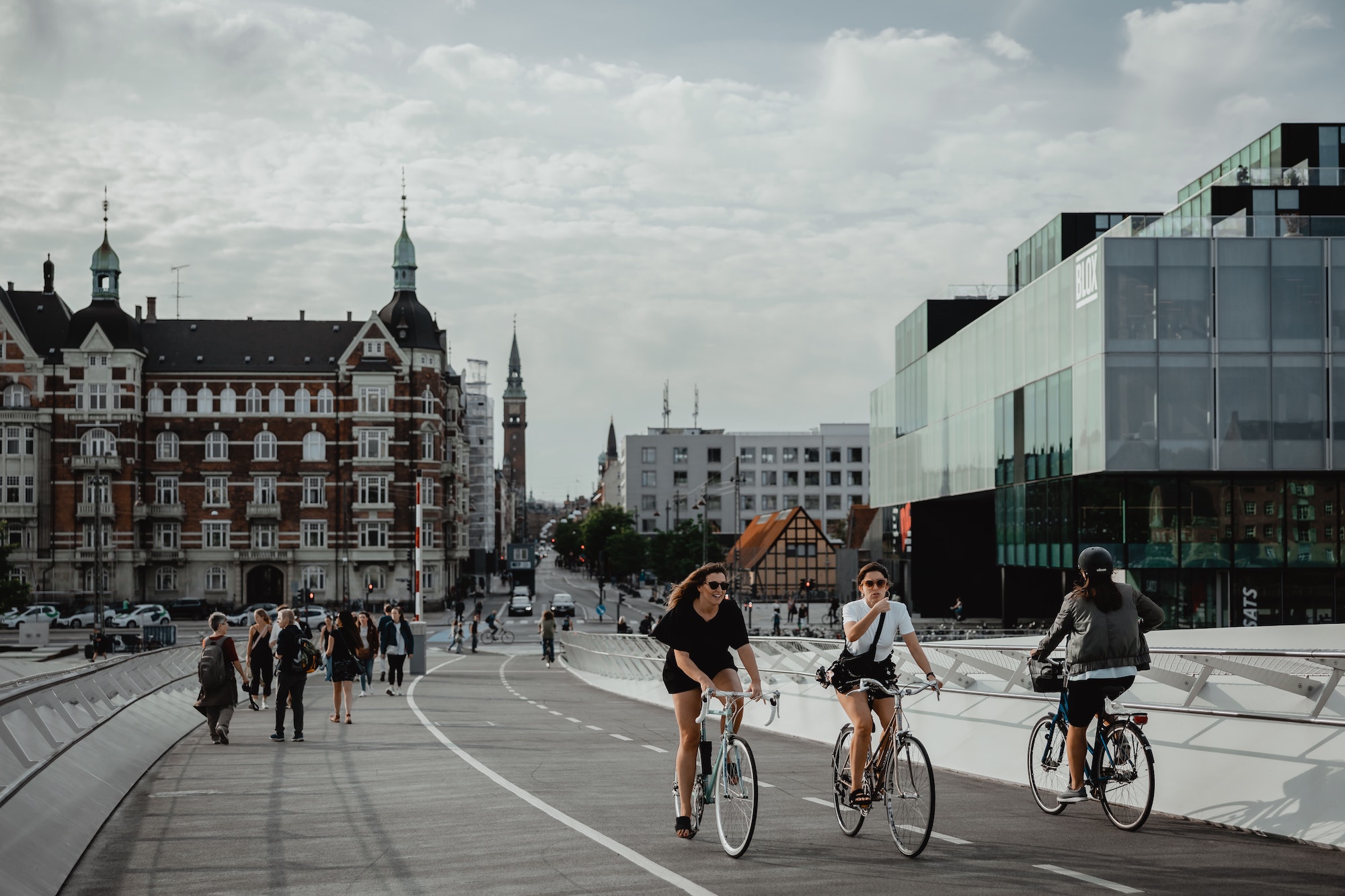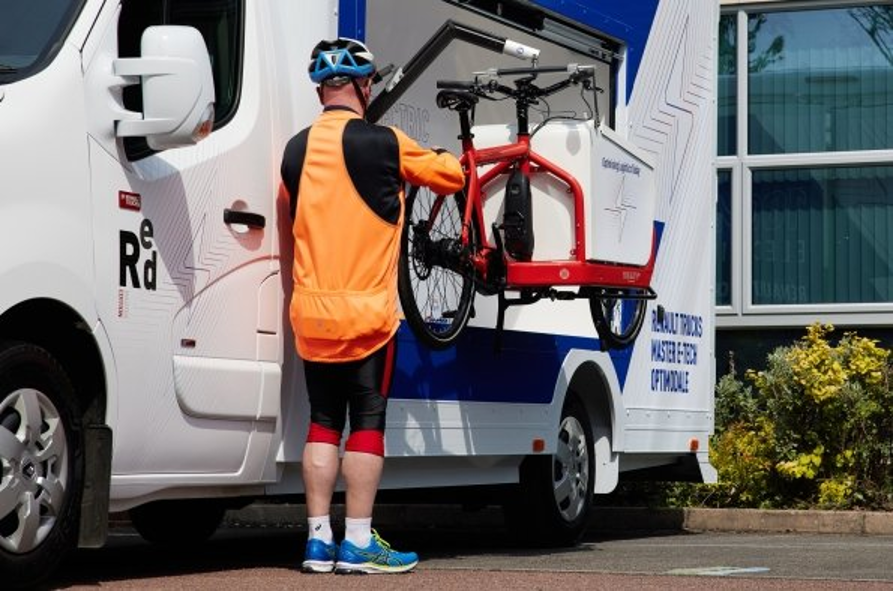
Cycling uphill
Driven by the climate crisis, its practicality in densely populated cities, and the development of efficient electrical solutions, bicycle use is on the rise overall. More than 120 million bicycles are produced worldwide each year, compared to 20.7 million in 1962. In France, urban cycling is up 39% in 2022 compared to pre-pandemic levels!
On a global scale, the modal share of cycling is estimated at around 5% – but there are strong disparities depending on the country and region. In The Netherlands, 58% of people travel by bicycle at least twice a week, compared to 12% in the United States. Some countries have ambitious plans to encourage cycling: in France, the Plan Vélo (Cycling Plan) aims for a modal share of 12% compared to around 4% today. A recent international study from IPSOS shows that cycling is the most favourably viewed mode of transport (from 93% of favourable opinions in Poland, to 64% in the United Kingdom – the weakest score).
With this in mind, developing cycling infrastructure is a key issue, in order to make cycling an even more efficient mode of transport, as well as guaranteeing user safety – as 52% of cyclists say that cycling in their area is too dangerous. Again, the differences are significant: the Global Bicycle Cities Index developed by Luko ranks Utrecht first in the world for the safest city for cyclists with a score of 77.84/100, while Lagos has a score of 11.81/100.
The last-mile hero for commuters
Apart from its eco credentials, the bicycle is particularly suited to one of today’s major urban challenges: the last mile. A major player in terms of multimodality services, it offers valuable flexibility in addition to train or car journeys. As such, its inclusion in main mobility hubs is particularly important. The Netherlands (again) serves as another perfect example of this, whereby railway stations feature bicycle parking facilities. (Still) In Utrecht, the Stationsplein Bicycle Parking has 12,500 spaces, includes a maintenance area for repairs, has a digital system which guides cyclists to free parking spaces, and cycling is permitted inside the building. A little less spectacular but just as useful, entry points into cities are becoming a popular place for encouraging the use of bikes. Even in small towns, such as Pornichet in France, this type of development aims to encourage users to ditch their cars to relieve city centre congestion.
… and for logistics
If the issue of the last mile is crucial for travellers, the same applies for logistics operators. And once again, the bike boasts qualities such as flexibility, a small footprint and its eco credentials. In France, a national cyclo-logistics plan has been launched to allow this virtuous mode of delivery to develop. It includes financial aid for companies that use cargo bikes, conversion bonuses for replacing old combustion engine vehicles, incentives for the development of dedicated insurance products, as well as the provision of premises for bicycle logistics hubs, and the development of dedicated digital solutions for optimizing loads and routes. Bikes themselves are quickly adapting to the requirements of the courier service industry. French startup K-Ryole is developing electric trailers capable of transporting 350kg of goods and adapted to bicycle traction thanks to force measurement sensors. At Renault Trucks, the E-Tech Master OptiModale combines three types of electric transport in one vehicle: a 3.5 tonne truck carrying a cargo bike and a delivery drone!

Roads climbing into the (bike) saddle
One of the keys to promoting cycling lies in adapting roads to cyclists needs – of which the former are still mainly designed for automobile mobility. In this respect, Paris is aiming particularly high. The French capital’s Plan Vélo aims to make the city 100% cycle-friendly by 2026 thanks to a €250 million investment. It includes creating 180km of new cycle paths, but also developing secure bike parks, a “cycling highway code” and self-repair workshops. In the same vein, New York aims to remove 25% of its road space from cars to make the city more cycle-friendly. Overall, a real culture of designing pavements suitable for cycling is developing around standards, guides and major principles.
Innovation in tune
To support this bicycle boom, infrastructure is adapting to feature a proliferation of technical or functional innovations.
“Pop-up” cycle paths: Implemented during the Covid crisis, the famous “corona-lanes” (now a permanent feature in Paris) embody a new type of pop-up cycling infrastructure. They have proven to be particularly effective throughout Europe by facilitating travel but also by establishing a “test & learn” method that is not so widespread for infrastructure of this type.
Bicycle highways and car-free infrastructure: Cycle paths are now being set free from car lanes, to become thoroughfares in their own right. The separate bike superhighways in Melbourne and Copenhagen are often cited as an example. Meanwhile in Milan, the Cambio project envisages to build four circular bicycle highways around the city and 16 radial lines which should eventually position 80% of public services, schools and hospitals within one kilometre of a bike route.
Solar canopies: In a logic of space optimisation, cycle paths covered with solar panels can be used to produce electricity while protecting cyclists. The most iconic example lies in the middle of a 32km stretch of highway in Sejong, South Korea.
Dedicated signage: Road signs are mainly designed for motorists. However, now they’re bring adapted to cyclists’ needs. The Cycling Embassy of Denmark presents a certain number of solutions such as: dedicated lights for cyclist which turn green slightly before those for motorists, meaning cyclists can enter an intersection first, thus increasing their safety; LED diodes on the track to mark the road; specific lighting in tunnels, and traffic light cyclist detection using RFID chips.
Innovative underground bike parks: With the cycling boom and the resurgence of thefts, parking your bike has become a complex issue. Popular in Asia, automated mechanical underground parking lots that allow cyclists to drop off a bike which is then “gobbled up” and stored in an underground tower in mere seconds. The process is then reversed when the user wants to retrieve their bike.
While bicycles now seem set to play an increasingly important role in the mobility mix, it is essential to maintain the momentum by tackling the main factors likely to hinder their development: safety, theft and practicality. This effort will largely involve the development of traffic and parking infrastructures, which are underway in large parts of the world.
Photo credit:
Cover: Dario Gomes on Unsplash
Header: Febiyan on Unsplash
This article is selected from Leonard’s bi-monthly newsletter. Subscribe to receive the full version.


